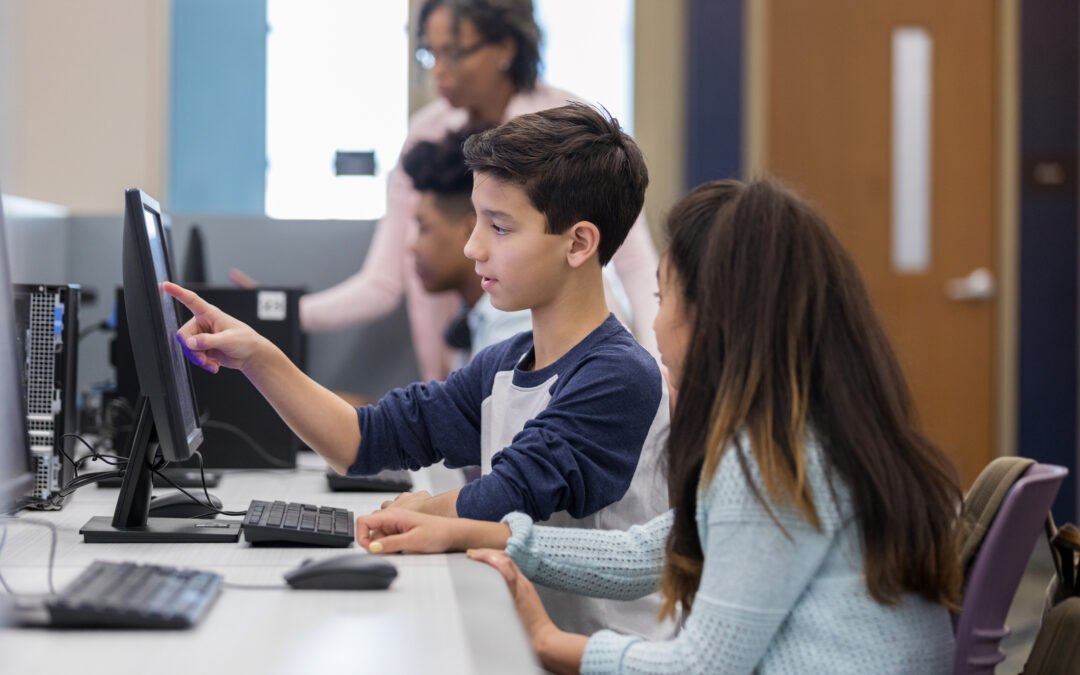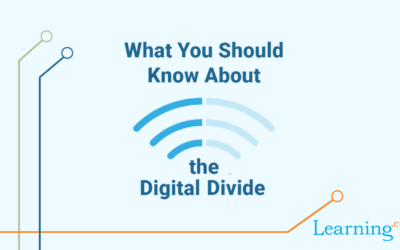In today’s world, it is critical that our students and teachers become digitally literate. Students are bombarded with social media, emails and advertisements every minute. Never before have we been inundated with constant information from so many sources.
This world of instant information is wonderful in many ways. For example, we are more connected globally and culturally as humans. We can quickly find information on almost any topic, and as such, learning has never been so easily accessed.
Yet the increasingly digital-reliant world has expanded the need for digital literacy, as well as expanding the type of instruction required for digital literacy. From digital citizenship to basic technology, online safety and more, digital literacy education must focus on creating digital literacy skills that will empower our students now and in the future.
Technology Skills and Digital Natives
We’ll often hear students referred to as “digital natives.” Most modern students have never been in a world without internet access, tablets, or smartphones. Because our students have grown up with technology, many make the mistake of believing they can easily understand and navigate the digital world.
Many students know how to use technology. They can problem-solve and operate technology, and may even seem as if they know more than teachers who are often digital foreigners (e.g. grew up before this type of technology became ubiquitous). But in reality, students do not necessarily know how to navigate and access the digital world with a critical eye.
We have found that students are often not sure how to distinguish truth from fiction online and cannot think critically about what they see in front of them. This online world is something they have always known, and they therefore trust it as truth. It is our job to teach them how to think critically about everything they encounter in the digital world.
Digital literacy impacts every subject and every teacher. We must embrace this and find ways to educate our students about this massive digital world.
Why do Students Need Digital Literacy?
The American Library Association’s digital literacy task force defines digital literacy as “the ability to use information and communication technologies to find, evaluate, create and communicate information, requiring both cognitive and technical skills.” Two components are key in this definition:
First, students and teachers alike should know how to use technology to find accurate information. This requires the ability to understand how search engines work, evaluate resources and determine what is true and false in the digital world. More importantly, this means students are taught to question the credibility and reliability of videos, articles and other information sources.
Second, students need the technical and cognitive skills to access information in the digital world. In order to be digitally literate, we must give our students the cognitive skills to question credibility, check sources, assess credentials and evaluate if information is opinion or fact.
Teaching Digital Literacy
Teaching digital literacy to students is about more than delivering and applying digital literacy curriculum. It takes the support and knowledge of the adults who surround the students to succeed.
Digital Literacy for Teachers
Teachers need education and professional development on digital literacy. Teachers need the resources to teach students how to access, evaluate, create and communicate information using digital technology. Teachers also need to know how to teach students to balance media, maneuver social media and deal with issues they encounter online. This is not only the responsibility of the technology teacher, but teachers of all subjects should support digital literacy.
Digital Literacy for Students
It is the responsibility of teachers and parents to teach students how to navigate the digital world. While these adults can work together to protect students from inappropriate content online and steer them toward the effective uses of digital technology, it is more important to teach them skills to do this on their own. Students should learn not only how to use technology effectively, but also how to stay safe and well-informed in doing so.
Digital Literacy for Parents
Finally, parents should be included in the digital literacy process. Parents should be aware of the digital literacy skills their children need for their future, including how to help ensure their students have access to relevant technology–in addition, families should be armed with the knowledge they need to help monitor students’ access to the digital world.
Reaching Students and Their Families
A key question educators face involves how to reach students and families. If we approach teaching digital literacy like any other subject, it becomes white noise. Students will not buy into only lectures on the topic. Some educators choose to reach them by utilizing Tik Tok trends, music, videos, social media and funny memes to engage students and start conversations.
Digital natives often listen best to digital sources, and educators can utilize these avenues. By doing so, we can constantly be sending the message that digital literacy is critical. I also believe families need the same approach.
Parents and families are busier than ever and need easy advice. Helping families have real conversations about the digital world, safety and media balance will pay off in the long run. Families are not going to read a long newsletter or email, but may look at a quick video, meme, or discuss a question over dinner. Consider meeting families where they are and with what they actually need.
Final Thoughts
Literacy has never been more critical than in our current times. Literacy now encompasses the digital arena. It is imperative that educators focus attention on critical thinking regarding online learning. We must empower our students to become more than digital natives, empowering each of them to examine, question and evaluate.
Download Learning.com’s latest resource, The Truth About Digital Literacy, to learn more about these critical skills and why we need to teach them intentionally and comprehensively to our students.
This article was originally published in July 2020 and has since been revised for relevance, sources and content.

Learning.com Team
Staff Writers
Founded in 1999, Learning.com provides educators with solutions to prepare their students with critical digital skills. Our web-based curriculum for grades K-12 engages students as they learn keyboarding, online safety, applied productivity tools, computational thinking, coding and more.
Further Reading
Digital Divide Statistics: The 4 Digital Divides Affecting Students
Flashback to the mid-1990s: Vanilla Ice released “Ice Ice Baby;” Ross and Rachel were on a break; and Google, Amazon, and Hotmail (RIP) graced the...
10 Principles of Respectful and Courteous Online Behavior: A Comprehensive Guide for Educators
Today, where much of our communication takes place online, teaching students the importance of respect and courtesy in their digital interactions is...
How TA-TEKS Can Improve Future-Readiness in Texas Students
Texas is becoming a hub for high-demand industries such as technology, healthcare, energy, and manufacturing. These sectors are increasingly reliant...




